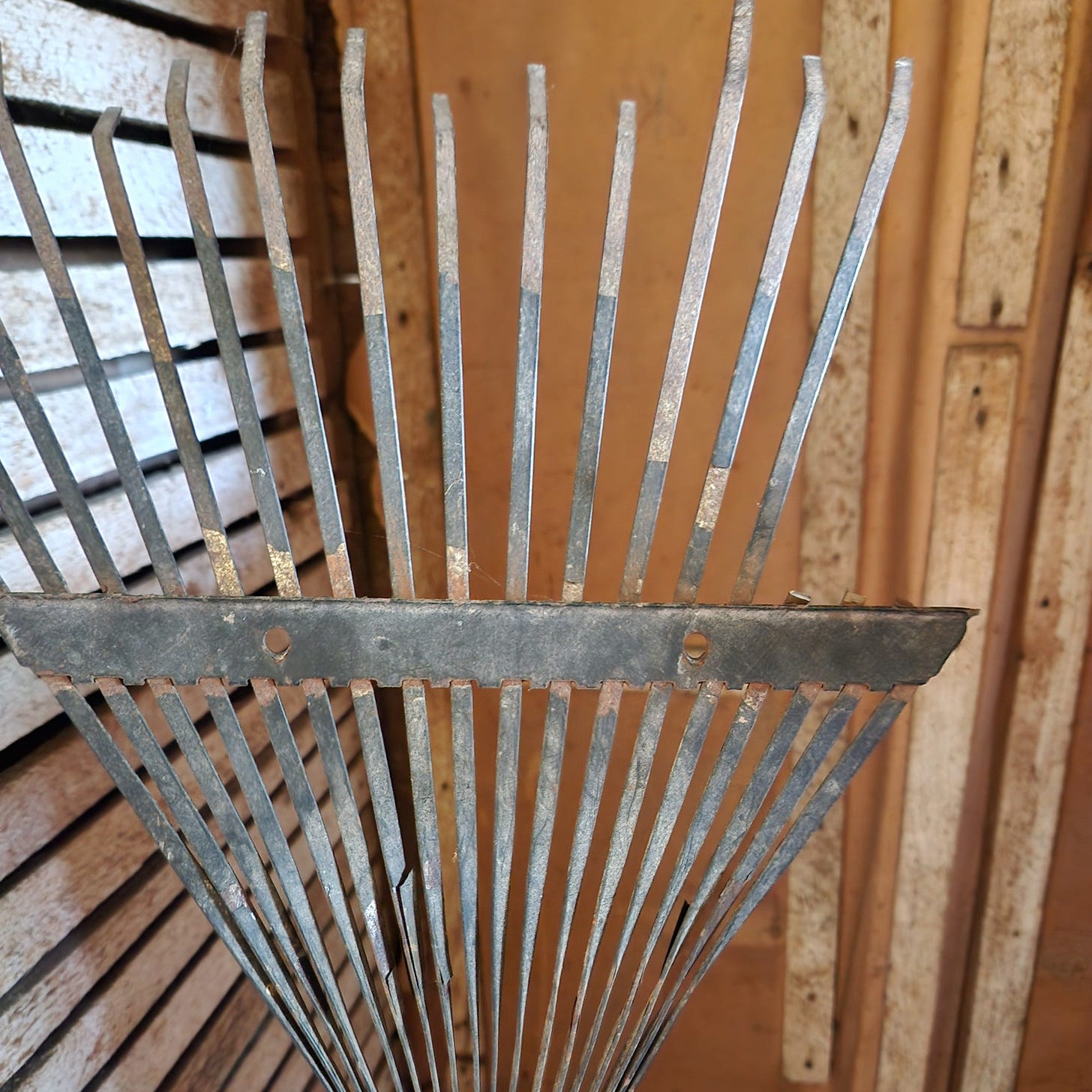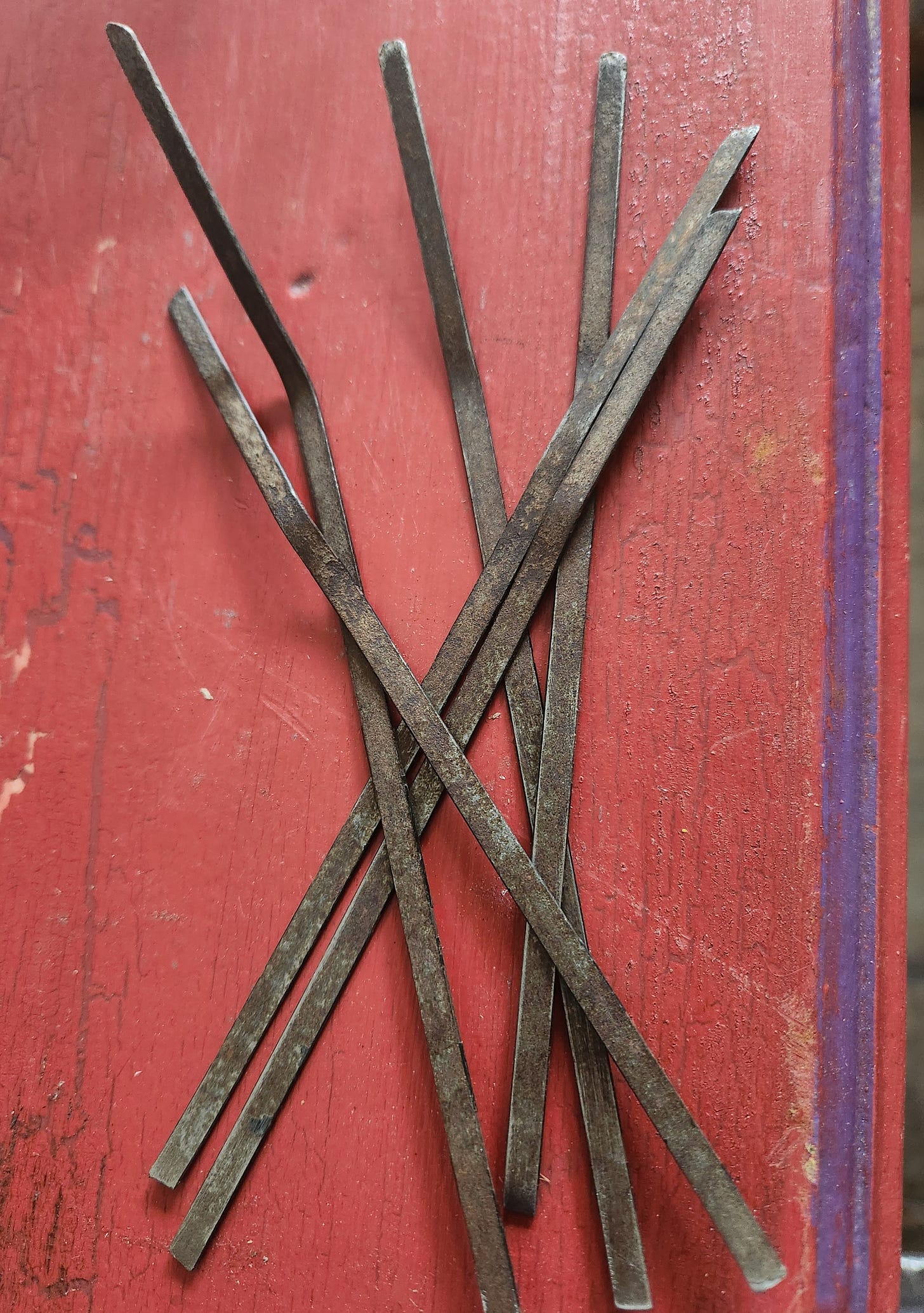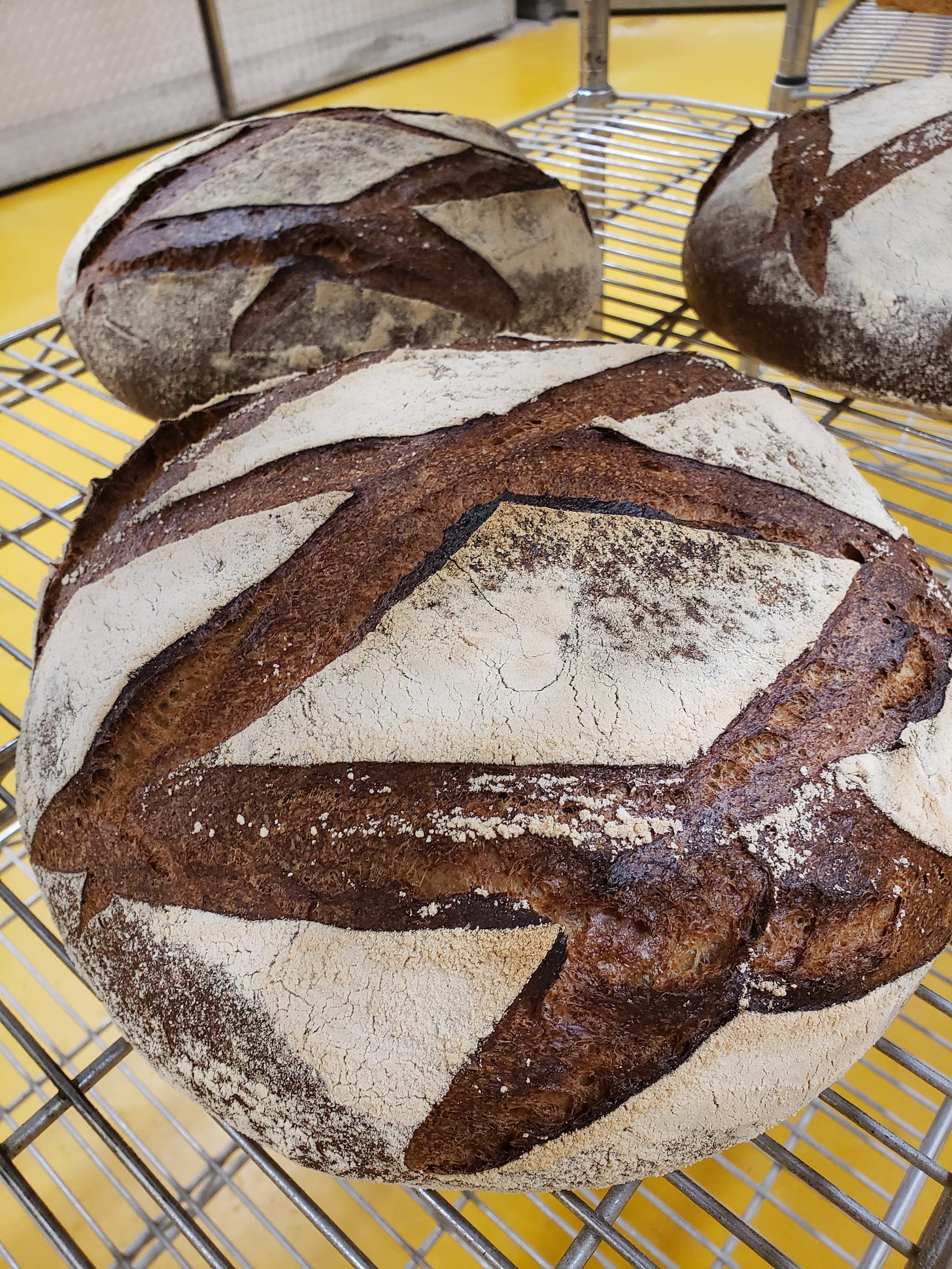One of the most beautiful things about bread baking is how at the intersection of ancient craft and physical labor, there is tremendous opportunity for intergenerational knowledge to be passed down. Over many years of baking bread, Mauricio and I have had many mentors who have compressed their years of experience into tangible morsels of advice for us. This compression of experience strengthens the bread baking community and is at the core of what keeps the tradition of bread baking alive. As we’ve been preparing for our Vermont relaunch, I’ve been thinking about some of the wisdom we’ve received over the years. We’re putting many of these tips and tricks to use in our bakery preparations, and here are a few that you may find interesting or even inspiring for your own baking journey.
The Best Lame is an Old Rake Tine
We learned this trick from Rob, the founder of the bakery where Mauricio and I met. We found an old rake for sale at a thrift shop for only $2, broke off the tines, and sanded the rough edges and chipped paint down with sandpaper. The result is more than a dozen sturdy, lightweight lames for cheaper than you could buy a single premade one. One key tip: check that the tines are the correct thickness to hold your blades before you invest your time!
Dough Senses Fear
We learned this morsel of wisdom from Chris, an old mentor of ours, and it’s so true. Part of being a new bread baker is the experience of having bread stick to everything, especially your hands. But bravery is key to progress as a baker, and being confident in shaping reduces how much time you’re handling the dough which in turn makes it less likely to stick. If you need proof that bread really isn’t that sticky at all, just look around any bakery for a few minutes. You’ll see tubs of dough balls that are touching each other but will release at the edges when picked up with confidence. We’re not handling dough here in Vermont yet, but we’re certainly putting the practice of channeling bravery and confidence to use.
Time Equals Flavor Depth and Quality
This is the conventional wisdom among many bread and pastry bakers, and it’s so true. When you hear pastry folks talking about brown butter, toasted white chocolate, and caramel, they’re referring to the delicious effects of the Maillard Reaction. Well, bread is mostly starch, and as bread dough ferments, the yeast break down many of the starches into sugars. Dark loaves of bread aren’t burnt; they’re caramelized. Check out these beautiful loaves of Miche we baked at our previous bakery that are the perfect color for a super flavorful crust.
I think the moral here is to not rush things and trust the process, a mindset we’re carrying over to our bakery construction. The plumbing and electrical work take the most time of anything, and while it’s being done, it doesn’t seem like much progress is being made. But patience during these two key processes pays off, and the end result is a better for it. Here’s my favorite bakery progress picture of the past week. More to come!







I'll take the thought of "dough senses fear" into the rest of my day. It just shows how important acting confident is - to others, ourselves, animals, and even to dough! Thank you for sharing, and wishing you and Mauricio patience with each step of the process.
Thanks for this article on the 'tricks of the trade' that are inherited from other experienced bakers.
Happy to hear and see the picture of the progress being made on your Vermont bakery. Please remember the wise saying,"Patience must have her perfect work."
A proud follower from Oakmont, PA